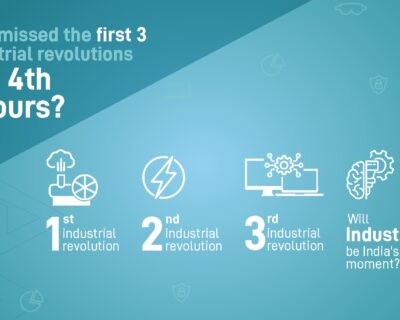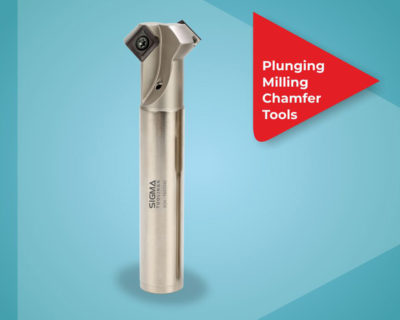
How to Budget for your Smart Factory Project?
Smart Factory project may seem like placing a strategic bet. The potential rewards are high, but so are the risks. Many things can go wrong, and budget overruns are common. In fact, studies show that up to 70% of Smart Factory initiatives either fail or exceed their budgets. This can test your patience and resources.
The two types of risks in the Smart Factory projects
The first type has high rewards but a lower downside. The second type carries a high downside with minimal upside. To improve your chances of success, focus on taking more of the first kind of risks. Support your team in taking calculated risks, giving them the freedom to make decisions that may not always work out but are necessary for progress.
To avoid common budgeting mistakes, here are some tips from our experience.
1. Base Your Budgets on the Cost of Problems, Not the Ideal State
It’s tempting to create a budget based on an ideal future state – ‘Smart and automated processes’ – where everything runs flawlessly. However, at Sigma, we found it practical to budget based on the cost of the problems. We looked at some pain points and assessed the financial impact. For instance, we realised a lot of time is being wasted in giving status updates to the customers. So, we automated that process. This approach gave us a realistic starting point. We knew money we are spending is invested in solving a real problem rather than chasing an ‘ideal’ vision.
2. Start with Clear Goals: Focus on Must-Haves Over Nice-to-Haves
When starting on a Smart Factory project, it’s crucial to set clear and realistic goals. Without them, it’s easy to lose focus and waste money. While planning your budget, make sure you separate the essentials from the “nice-to-haves.” What do you absolutely need to achieve your objectives? By prioritizing the must-haves, you can avoid spending on features or technology that may seem attractive but aren’t necessary for the initial phase of your project.
3. Buy vs. Build: Invest Wisely to Avoid Unnecessary Costs
Another important factor is deciding between buying off-the-shelf solutions or building them in-house. While building might require more effort and higher initial investment, it can be more cost-effective in the long run. Many vendors may offer Smart Factory integration packages with hundreds of features, many of which may not even align with your specific goals. Instead of buying unnecessary features, consider customizing your solutions in-house to match your needs and keep costs under control.
4. Budget for Knowledge and Expertise
Sometimes, you or your team may not have all the knowledge required to implement certain technologies. That’s perfectly normal. When budgeting, always account for the need to bring in external expertise or knowledge. Whether it’s consulting with domain experts or hiring specialists, investing in the right knowledge will help you avoid costly mistakes down the road. Smart Factory projects often involve complexities that need experienced hands to guide the process efficiently.
5. Budget for Dedicated Resources
Smart Factory projects require focused attention and accountability. It’s not something you can tack onto someone’s existing workload and hope for the best. Budget for dedicated resources
people who are solely accountable for driving the project forward. They should have clear goals and the authority to make decisions that take the project forward. Giving a vision and hoping for the best is a sure way to lose money in Smart Factory.
6. Budget for Pilots Before Scaling
Before you commit budgets to a full-scale rollout, be sure to make small budget pilot programs. These smaller, controlled implementations allow you to test, learn, and adapt without risking a massive financial loss. Pilots provide invaluable insights into what works and what doesn’t, helping you refine your approach before scaling up. Pilots will keep the risks low and also the losses, if any.
7. Prioritize Budget for Training and Mindset Change Over Technology
One of the biggest mistakes companies make is pouring the majority of their budget into technology while neglecting the human element. The reality is, budgeting towards training and changing mindsets is highly underrated. Remember, there will be resistance to adopting new processes, and without buy-in from the team, even the most advanced technology will fail to deliver its promised benefits. Training should focus on demonstrating the value of the new system and empowering employees to embrace change.
8. Budget for Mistakes, Improvisations, and Iterations
The path to a successful Smart Factory is rarely linear. Expect mistakes, improvisations, and multiple iterations. You might have 99% completed project, but with 100% exhausted patience. This means, there’s still a good chance you’ll feel like abandoning the project. In Smart Factory projects, you often don’t realize the problem is fully solved until you’re at the very end. Think of it as the “90% after 90%” rule—90% of the real work begins after you think you’re 90% done. Budgeting for this non-linear journey is crucial.
At Sigma Toolings, we transformed into a Smart Factory with no help from large software vendors and consultants. The entire Smart Factory initiative was run by our team in the Factory – Working Supervisors, Production Engineers and Managers. We are proud to accomplish many ‘Smart’ breakthroughs in our factory at fraction of budgets that are typically allocated in large Smart Factory projects. The tips mentioned above have been very helpful to us in the frugal implementation of all our Smart Factory initiatives. We hope they will be equally useful for you as well.




